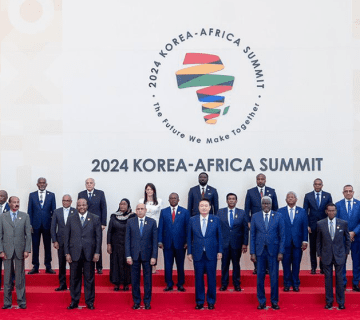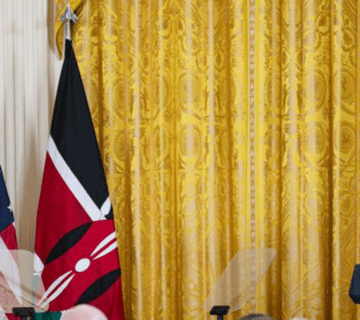Ethiopia’s Prime Minister, Abiy Ahmed, yesterday announced that the law enforcement operation that he spoke about on November 17, 2020 has entered its “final phase.” As fighting between Ethiopia National Defence Force (ENDF) and Tigray People’s Liberation Front (TPLF) continues, and with a six-month state of emergency in place in Ethiopia’s Tigray State, civilians are fleeing Tigray State – the key flashpoint in this conflict. Contrary to the expectation that they would seek refuge in both Sudan, and Eritrea – the two countries most proximate to Tigray State – they have been opting predominantly for Sudan. More than 40,000 civilians, according to Babar Baloch, UN refugee agency’s (UNHCR’s) Spokesperson, have already crossed into eastern Sudan via border points such as Hamdayet and Aderafi since the conflict began on November 4, 2020. This flight pattern reveals the natures of relations between different ethnic groups; the Ethiopia-Sudan, and Ethiopia-Eritrea borders; and Ethiopia’s regional state borders. Leveraging this information will improve humanitarian responses, nation-building, and border security efforts.
The Sudan Option
Three realities explain the preference for Sudan as opposed to Eritrea and/or other parts of Ethiopia. First, Tigray is home to refugees from countries such as Eritrea and Sudan, about 100,000 internally displaced Ethiopians (according to UNHCR), and Ethiopian Tigray. Many of these displaced persons live in refugee camps such as Humera, Hitsats, and Shimelba. For some of them, secondary displacement into Sudan is more palatable than moving to Eritrea or other parts of Ethiopia. For Eritrean refugees escaping political torture, or forced conscription of youth into Eritrean forces, for example, heading to Sudan is more attractive than returning to Eritrea. For some Sudanese refugees, returning to their country, which appears to be much safer at the moment, is preferable to the increased risk of being caught up in ENDF-TPLF crossfire. Fighting began when PM Abiy deployed troops in Tigray State in response to a TPLF attack on ENDF’s Northern Command base in Mekele, Tigray State’s capital, on November 4, 2020. Since then, TPLF has attacked Asmara and ENDF has launched airstrikes in Mekele. Additionally, Abiy asked TPLF to surrender, and on the expiry of the surrender ultimatum, announced a final law enforcement operation.
The dynamics of ethnic identity in Ethiopia provide the second explanation for this pattern of displacement. In Ethiopia, courtesy of ethno-federalism, different ethnic groups predominantly reside in different, ethnic-oriented regional states. Consequently, there are physical and ethnic borders around regional states that demarcate ethnic in-groups and out-groups. As a result of this ‘othering,’ some internally displaced Ethiopians in Tigray State and Ethiopian Tigray displaced by the current conflict are opting to relocate to Sudan as they are more likely to find acceptance as refugees there than as displaced persons in other parts of Ethiopia. Further, although about 60 per cent and seven per cent of the Tigray reside in Eritrea and Ethiopia respectively, relations between Tigray people in the two countries, and the Tigray and the Ethiopian government are characterized by unresolved post-Ethiopia-Eritrea War grievances, suspicion, and mistrust. Overall, relocating to a place where their humanity would trump over their ethnic identity is thus an easier and more desirable decision even where this involves walking for several days to the Ethiopia-Sudan border.
The third reason why more displaced civilians are heading to Sudan rather than Eritrea or other parts of Ethiopia relates to border porosity. There is a stronger state presence on both sides of the Eritrea-Ethiopia border compared to the Sudan-Ethiopia border where state presence is weak. It is also easier for the displaced civilians in Tigray to transcend the Ethiopia-Sudan border compared to regional state borders in Ethiopia. Tigray State has been bordered by Amhara State to the south and Afar State to the east since 1995 when Ethiopia’s nine regional states were created. Currently, relations between Tigray and Amhara, Tigray and Afar, and Tigray and Oromo, for example, are poor. To complicate matters, Amhara Special Forces, Afar Regional Forces, and Eritrea Special Forces are currently allied to ENDF. The increased number of refugees in camps in eastern Sudan suggests that civilians fleeing Tigray are finding it easier to cross the more porous Sudan border than to cross into the less porous Afar or Amhara regions, or Eritrea-Ethiopia border.
Addressing Critical Needs
Categorizing (re)displaced refugees and prioritizing those arriving from Tigray State and humanitarian aid to newly filled camps in eastern Sudan and western Tigray State will ensure that the needs of the most vulnerable individuals and not conflict opportunists are met. While a humanitarian response is necessary and welcome, it is a temporary safeguard for the fleeing civilians. The more sustainable thing to do would be to address the root causes of displacement. In this case, Ethiopians could borrow a leaf from Eritrea when reforming her socio-political landscape.
In 1991, new borders were drawn in Ethiopia and Eritrea. Ethiopia, on the one hand, chose to model the country on ethnic uniformity, emphasized by ethnic regional states and enshrined in the 1995 Constitution. Eritrea, on the other hand, chose ethnic diversity, ensuring that no ethnic group dominates a given region. Today, ethnicism is not a significant obstacle to progress in Eritrea. However, Ethiopia’s struggles with the complexities of negative ethnicity are becoming epic. Abiy’s reform agenda, which has included formalizing the broadening of ruling political party membership to include more of Ethiopia’s ethnic groups, is in the headwinds of actors such as TPLF.
When it comes to border security, Sudan needs to reduce the porosity of its eastern border by policing the peripheral areas more to lessen the existing center-periphery security divide. Increased state presence will reduce the illegal movement of persons and goods (including weapons) that can lengthen conflict episodes such as this one, destabilizing the region. Making Ethiopia’s regional state borders more accessible to all Ethiopians will reduce their displacement internationally in times of crisis.
Roselyne Omondi is Associate Director, Research, at the HORN Institute.
Photo: Tigray refugees queue for food outside Sudan’s Hamdayit transit centre on November 27, 2020 (Photo Credit: Ashraf Shazly AFP/File)



